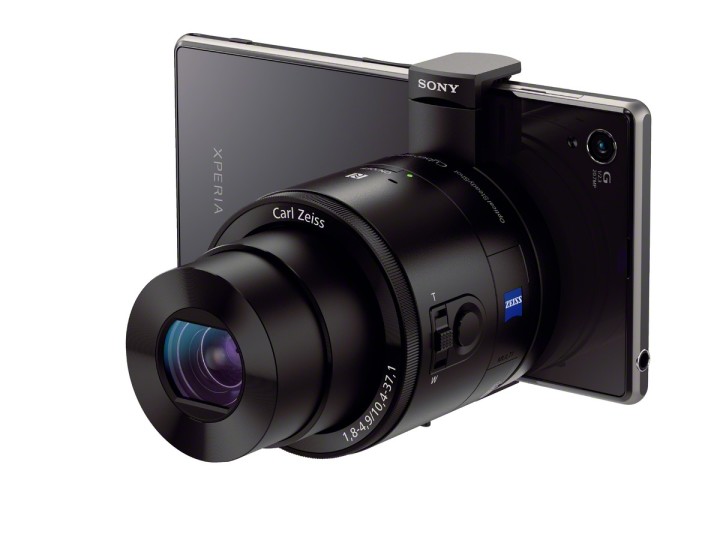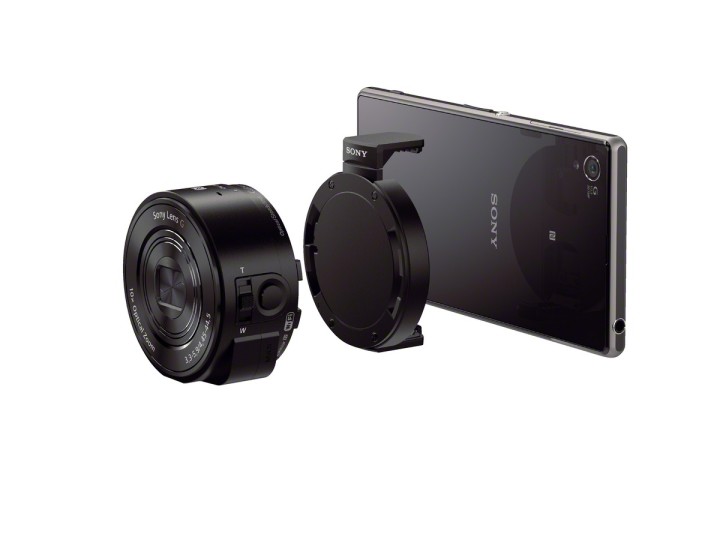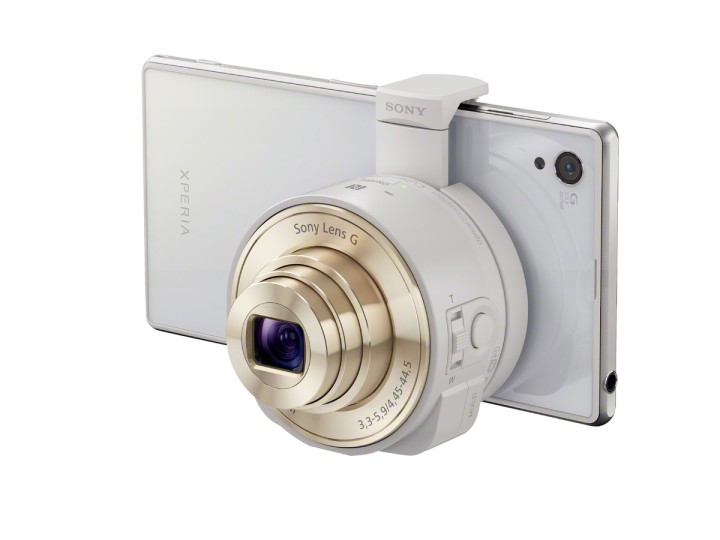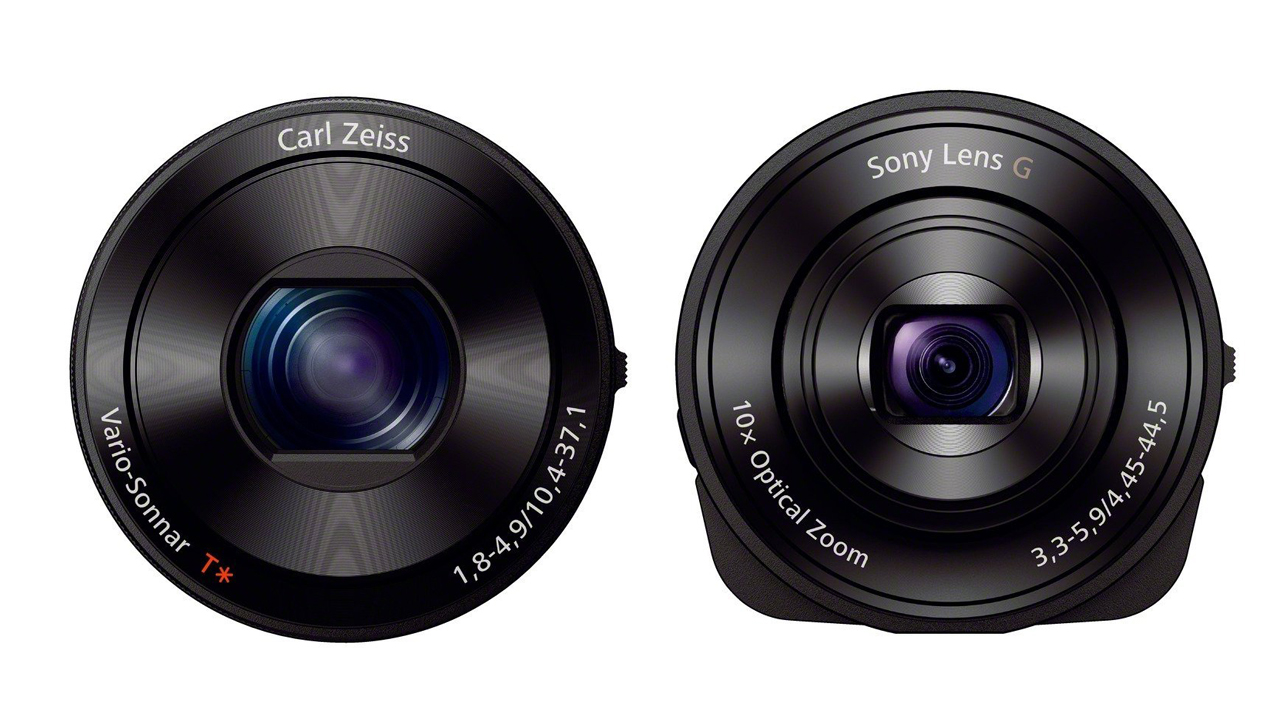Today marks the announcement of the first two “lenscameras” from Sony, the DSC-QX10 and DSC-QX100. Only six months ago, the concept of a “lenscamera” seemed too fanciful for words, but here they are, against all odds!
These lenses represent a huge leap in technology from the external smartphone lenses previously produced. Whereas the QX lenses are actually cameras in and of themselves, previous external smartphone lenses were very much restricted by the tiny sensor and general capabilities of the phone.

According to the official press release, the QX-100 will be the more advanced of the two, with the same Carl Zeiss f/1.8 lens and 1-inch EXMOR CMOS 20 MP sensor found in the RX100 MII. It will have an ISO range of 160-6400 but is extendable to ISO 100 and 25600. Since it shares the exact same sensor as the RX100 MII, I am surprised to see that it doesn’t share the same ISO range as well. (The RX100 MII goes natively up to 12800.)
Sadly, there is one point that lets the QX-100 down: the $500 price tag. Will people really be interested in spending that kind of money just to take better photos with a smartphones?
Conversely, the QX-10 actually seems like a good deal. It will go for around $250, a very attractive price for consumers who prefer smartphone photography to traditional photography. The specs include: a 18 MP 1/2.3 inch CMOS sensor, high-grade Sony G f/3.3 lens with a 10x optical zoom and ISO 100-3600 (extendable to 12800).

Both lenscameras will have Wifi/NFC connectivity, a built-in stereo mic, Contrast Detection AF, Touchfocus AF (on smartphones) and face detection. Moreover, they will feature Full HD video, a tripod mount, a microSD slot and in-lens stabilization.
Both can be uncoupled from the phone and used wirelessly, making them useful for “selfies” or shooting in awkward places. If you choose to attach the lens to the phone, there are various ways to do so. For Sony Smartphones like the new Xperia Z1, there is the option of locking the lens onto a special cover. For every other type of smartphone, there is an adapter that you latch onto the long-edge of the phone.
Using the free PlayMemories mobile app, you will be able to control a handful of settings from your smart device but according to the Phoblographer’s first impressions article, you won’t have the freedom you’d have with a compact like the RX100 MII, for example.

A shutter release button is also present on one side of the units, as is a USB port for connecting the lens to your computer.
Something to note is that neither lenscamera shoots in RAW format. However, it makes sense that they only shoot JPGs as it would take a long time to transfer RAW files wirelessly. Moreover, amateur photographers (the target audience for these lenses) generally have no interest in post-processing their pictures anyway.
Smartphones lacking in NFC connectivity (like all the Apple iPhones) will require some extra steps to connect the two devices, like entering the Wi-Fi settings, choosing the device network and opening the dedicated app. The connection will be almost instantaneous with NFC smartphones such as the Sony Xperia Z1 or the Samsung Galaxy S4.

Conclusion: Are ‘lenscameras’ a replacement for compact cameras?
Andrea of SonyAlphaRumors has wisely said that releasing lenscameras could be Sony’s way of replacing the dying compact market, and we couldn’t agree more. Electronics stores in the US have already ordered more of the QX series than any other Sony camera in history, so they must have a good feeling about the QX’s sales potential as well.
A few years down the road, the QX series (or series like it) may also prove a formidable competitor for low-end mirrorless cameras. They cost about the same as a lens you’d use on a MILC, and can be used interchangeably on your smartphone.
My prediction is that we may see a series of QX zooms and fixed primes that, combined with the advanced technology found in the smartphones of 2014/15, will obliterate the need for compacts and low-end mirrorless cameras altogether.
This said, I cannot help but wonder how practical a lens like this would be in real world situations. It is, after all, an extra accessory to carry around which requires not only a protective case when in your bag, but also extra care when attached to your phone. Not to mention that it may not be ergonomically comfortable to use on every smart device.
Plus, for it to even be an option for our impatient modern generation, the WiFi/NFC connection would have to be easy to use, quick and seamless, three essentials lacking in most WiFi-enabled cameras. Whether it lives up to expectations is yet to be seen.
The QX lenscameras are already available for pre-order and will ship on September 27th 2013. Rumours suggest that even more QX lenscameras may be on the horizon in 2014.
You can see the full list of specs on the official Sony website.
What do you think of the new QX-10 and QX-100? Is it a product you’d be interested in buying? Am I being too futuristic in my predictions? Let us know what you think!

